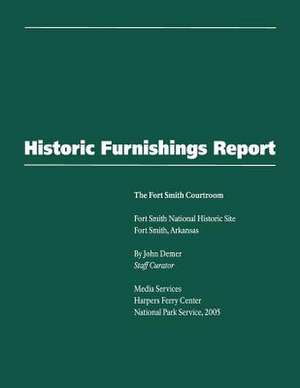Historic Furnishings Report - The Fort Smith Courtroom
Autor National Park Serviceen Limba Engleză Paperback
Preț: 94.27 lei
Nou
Puncte Express: 141
Preț estimativ în valută:
18.04€ • 19.59$ • 15.15£
18.04€ • 19.59$ • 15.15£
Carte disponibilă
Livrare economică 01-15 aprilie
Preluare comenzi: 021 569.72.76
Specificații
ISBN-13: 9781482319200
ISBN-10: 1482319209
Pagini: 98
Dimensiuni: 216 x 279 x 5 mm
Greutate: 0.25 kg
Editura: CREATESPACE
ISBN-10: 1482319209
Pagini: 98
Dimensiuni: 216 x 279 x 5 mm
Greutate: 0.25 kg
Editura: CREATESPACE
